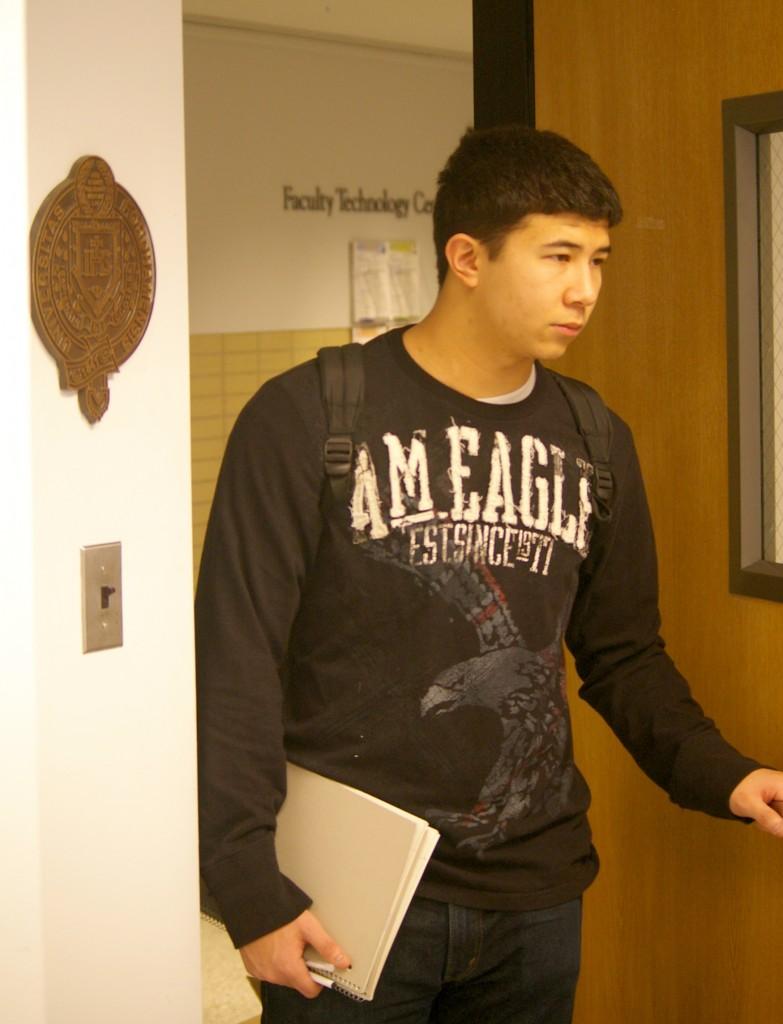Gender Gap Closing on National Level; Remains Prevalent at FCLC
June 28, 2011
Published February 18, 2010
A recent report by the American Council on Education indicates that the gender gap in college enrollments, in which women have consistently outnumbered men in university demographics, has decreased and “leveled off.” According to Fordham College at Lincoln Center’s (FCLC) enrollment statistics, gender gaps have indeed decreased and more males have enrolled at Fordham University than previous years, though FCLC still experiences a significant gender gap. An article published on Jan. 26 on InsideHigherEd.com discussed the closing of gender gaps at universities, saying that many “indicators suggest that the size of the gender gap in higher education may have stabilized” and “the number of bachelor’s degrees being awarded to men is again on the rise.”

Patricia Peek, associate director of admissions and director of the Lincoln Center Enrollment Group, provided statistics demonstrating an overall increase in male enrollment for Fordham University, demonstrating a 49 percent male to 51 percent female ratio as a combined profile of all Fordham University undergraduate schools. Peek also gave statistics for FCLC, which show that the ratio of freshmen males to females in the class of 2010 was 33 percent to 67 percent; for the class of 2011 it was 37 percent to 63 percent, a four percent change. For the class of 2012, it decreased to 32 percent to 68 percent. However, for the class of 2013, it jumped back to a 35 percent to 65 percent male-to-female ratio.
Despite this recent increase, these figures still demonstrate that while the gender gap further closed for Fordham University, it continues to exist at FCLC.
Sathi Roy, FCLC ’13, said, “I think the gender gap has mostly to do with the fact that FCLC is known for its English, communications and arts department which generally attract more females. On the other hand, I hear there are more guys than girls at Rose Hill because they offer different majors like business and sports, which are mainly male-dominated.”
Atul Kapoor, FCLC ’13, said, “There are clearly more guys than girls in the computer science classes that I am taking. It doesn’t really affect me that there are more girls than guys at FCLC because I am used to it from high school experience.”
“Our male/female ratios are in line with what many colleges are experiencing,” Peek said. “Program offerings do play a role, on a national level, as some majors traditionally enroll a disproportionate number of males (sciences, math, engineering, business) while others attract more women (liberal and performing arts).” She said, “This is evidenced in our college splits and enrollments at overlap Catholic/Jesuit colleges.”
The InsideHigherEd.com article also claims that the gender gap among Hispanic students was growing. Statistics included in the article show that in 2007-2008, males 24 or younger made up 46 percent of all undergraduates. Of all Hispanic students that year, only 42 percent were male (compared to 43 percent in 2003-2004, and 45 percent in 1999-2000). According to the Fordham University Enrollment Group’s Office of Undergraduate Admission, the FCLC class of 2013 is 49 percent male, 13.6 percent of which are Hispanic. FCLC, a predominantly caucasian community, has shown an increase in Hispanic enrollment over the past few years.
Peek said, “The consistency demonstrated runs contrary to the data presented in the [InsideHigherEd.com] article.” She said that in terms of Hispanic male enrollment patterns, “in fall 2008, the undergraduate, Hispanic male enrollment in all colleges was 10.7 percent. In Fall 2009, the undergraduate, Hispanic male enrollment was 11.2 percent,” demonstrating an increase in Hispanic male enrollment at FCLC.
Kristian Krober, FCLC ’11, said, “I feel like the history major classes are more equal, but the core classes are the ones that seem imbalanced. Sometimes [when there are less guys on the campus] it feels like things are missing and you’re missing a part of an experience you expect at a university, especially when there are no fraternities.”











